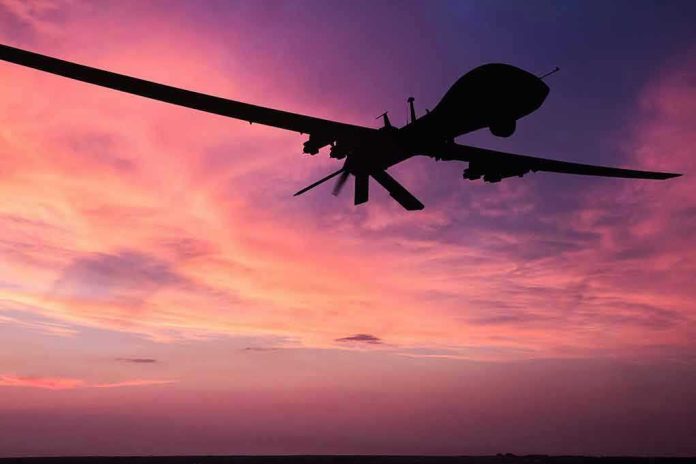
Armed drones designed to neutralize school shooters in seconds are being tested in several Florida districts, raising both hope and concern among educators and parents.
Story Overview
- Florida schools are testing drones designed to stop school shooters.
- The initiative is part of a broader trend of integrating technology for safety in education.
- Concerns include cost, privacy, and the potential for misuse.
- Proponents argue it could save lives and enhance security.
School Safety Technology Takes Flight
Several Florida school districts are pioneering the use of armed drones as a security measure against potential school shootings. These drones, developed by a Texas-based company, are designed to neutralize threats within seconds of detection. The initiative represents a significant step in integrating cutting-edge technology into educational settings, aiming to address the growing concerns of school safety. However, the introduction of such technology has sparked a debate regarding its implications for privacy and ethical considerations.
Balancing Safety and Privacy Concerns
The deployment of drones in school environments raises complex issues. While the primary goal is to enhance safety, critics argue that the presence of surveillance technology could infringe on students’ privacy rights. This conversation is particularly relevant given the emphasis on individual liberties, a core tenet of American conservative values. Proponents, however, believe that the potential to prevent tragedies justifies the use of such technology, provided strict regulations are in place to ensure responsible use.
Cost is another significant factor. Schools must weigh the benefits of increased safety against the financial burden of implementing and maintaining drone systems. With educational budgets already stretched thin, some districts may find it challenging to justify the expense, despite the potential for life-saving interventions.
Implications for the Future of School Security
As these programs expand, they could set precedents for broader adoption across the country. The potential for drones to act as a deterrent and rapid response measure offers a compelling case for their integration into school security protocols. However, it is crucial to evaluate the long-term effectiveness and ethical implications of such measures. The conversation around this technology highlights the need for a balanced approach that considers both the safety and rights of students and educators.
Armed drones designed to neutralize school shooters in seconds are being tested in several Florida districts https://t.co/8AcLo205Qr pic.twitter.com/6cmRuY03XN
— New York Post (@nypost) August 25, 2025
Despite the challenges, the advancement of drone technology in schools represents an innovative step towards addressing the complex issue of school safety. As this initiative progresses, it will be essential to monitor its impact and gather data to inform future decisions, ensuring that the solutions implemented are both effective and equitable.
Sources:
Case study of drone program implementation in a K-12 charter school.
Middle school after-school drone program and its educational outcomes.
“Take Flight” project targeting rural girls in STEM through drone education.
University-level drone program case study, including cost, training, and certification.



